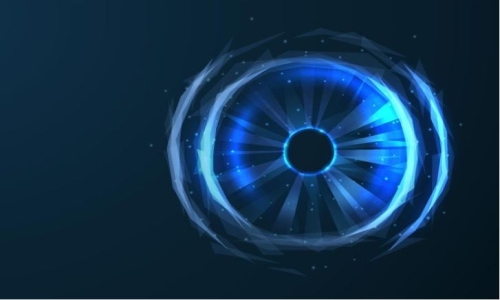


 2:7:2
2:7:2  2023-08-28
2023-08-28  872
872

Wood is good for a lot of things. Building boxes, boats, and bookcases, for instance making tools, or campfires, Feeding termites, and beavers.
You'll note powering functional electrical appliances isn't among them.
Researchers at Linköping University and the KTH Royal Institute of Technology in Sweden clearly never paid much attention to lists of things wood is bad at, so they went ahead and made the world's first wooden transistor.
To be upfront, the team behind the innovation added a special ingredient to get around the whole issue of wood being so lousy at conducting a current. And while it works, don't expect to find one inside your next smartphone.
"Yes, the wood transistor is slow and bulky, but it does work and has huge development potential," says electrical engineer Isak Engquist from Linköping University.
The humble transistor is a fundamental component in just about any piece of electronic technology. Functioning as a tiny 'gate' that controls the flow of one current through the application of another, it can amplify signals, store data a a string of switches, or work together to carry out logic operations.
It can do all of this thanks to a property of semi conductive materials that permits them to carry a current only when they themselves have enough of a charge.
Where the first transistors were lumpy objects you could maybe balance on a fingertip, they've since been constructed on a scale that crams tens of billions into the same space.
Wood isn't semi conductive. In fact, the carbohydrate building blocks of plant fibers are downright stubborn when it comes to kicking electrons down the road.
One way to get around that problem is to reduce wood to a stick of charcoal, leaving a relatively pure carbon highway for an electrical charge to tumble along.
But charcoal isn't really wood, so where's the fun in that?
Using the hardwood balsa for its relatively high strength, low density, and homogenous structure, Engquist and his team stripped it free of its tough lignin and filled the remaining material with a mixed electron-ion conducting polymer called poly(3,4-ethylenedioxythiophene)-polystyrene sulfonate, or PEDOT:PSS.
If we're being technical, the wood acts more as housing for the conductive material, like a messy bundle of wires. The idea isn't a new one either, with researchers having previously explored the idea of using plant material as a porous container for electrochemical and conductive substances.
Engquist built on this experience by attempting to optimize the removal of lignin to create a more efficient channel for the polymer to operate within, before analyzing the conductive properties of the balsa-polymer unit.
By stacking millimeter-thick units that operated as electrodes and channels, the team found they could create a rather crude transistor. With no voltage, the entire structure can be considered open and the switch set in the 'on' position. Pump in 6 volts, and the channel fills with electrons, slowly squeezing the channel shut and flicking the switch into the 'off' position.
Reality Of Islam |
|

Cameras hav

For years,

New scienti

This is the
 9:3:43
9:3:43
 2018-11-05
2018-11-05
10 benefits of Marriage in Islam
 7:5:22
7:5:22
 2019-04-08
2019-04-08
benefits of reciting surat yunus, hud &
 9:45:7
9:45:7
 2018-12-24
2018-12-24
advantages & disadvantages of divorce
 11:35:12
11:35:12
 2018-06-10
2018-06-10
 6:0:51
6:0:51
 2018-10-16
2018-10-16
 7:6:7
7:6:7
 2022-03-21
2022-03-21
 5:57:34
5:57:34
 2023-03-18
2023-03-18
 2:5:14
2:5:14
 2023-01-28
2023-01-28
 8:4:21
8:4:21
 2022-01-08
2022-01-08
a hero waters thirsty wild animals
 9:4:9
9:4:9
 2022-01-06
2022-01-06
 8:19:41
8:19:41
 2018-06-21
2018-06-21
 8:25:12
8:25:12
 2022-03-09
2022-03-09
 5:41:46
5:41:46
 2023-03-18
2023-03-18
| LATEST |